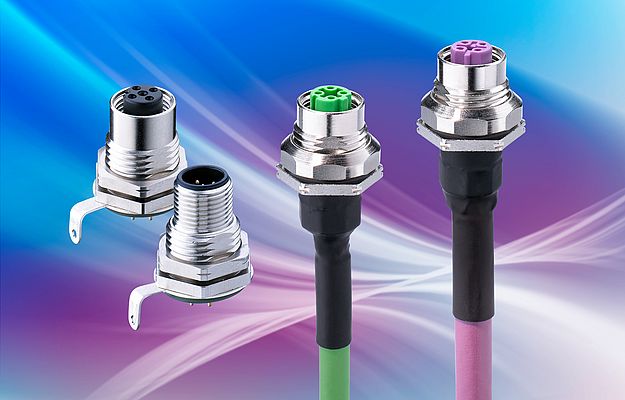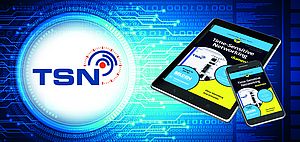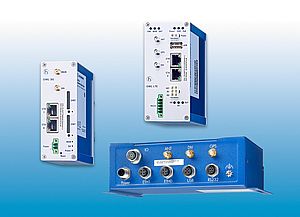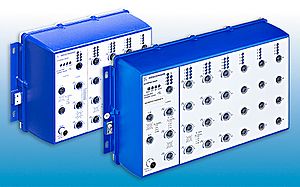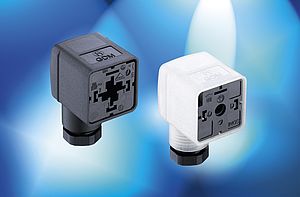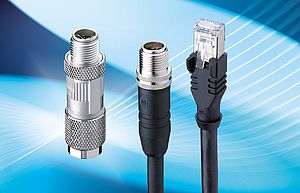The new M12 receptacle connectors from Belden's Lumberg Automation product range can be used to connect control units to ProfiNet/Profibus networks via bus modules as well as to transmit analog data at field level. Integrated shielding between devices brings a high level of functional reliability. The connectors come with assembled control cables or with printed contacts for PCB mounting. In the printed contact versions, the integrated shielding ensures optimum flexibility for shield continuity. In the case of the assembled connectors, and depending on the port assignment of the control units, a diagnostics interface can be implemented outside the switch cabinet using an Ethernet connection. This practically eliminates the disruptions resulting from repair or maintenance work. These receptacle connectors are simple to install due to M12 connection technology and color-coded bus connections. Additional features include industrial protection class IP67, high shock and vibration resistance, and a wide temperature range of -30 to +80° C. They enable highly-available data communication solutions in areas such as mechanical and plant engineering, material handling or public transport. The connectors’ compact housing is made of nickel-plated brass. Versions with assembled control cables are intended for rear mounting. The male connectors have four or five poles. The female connectors are available with D (four poles) or B coding (five poles). Made of polyurethane (PUR), control cables have cross-section diameters of 0.34 or 0.75 mm2 and are available in lengths of 1, 3 and 5 m. Other cable lengths can be provided on request. Likewise intended for rear mounting, the M12 receptacle connectors with printed contacts are fastened using PG-9 threads and RSFK-9 lock nuts. By means of the integrated shielding, metal casings can be attached to cable lugs or eyelets, and plastic casings can be soldered to PCBs. Because the connector housing is available to the solder wave in addition to the actual contact, the reliability of the soldering process is further enhanced. The male and female connectors are available with four, five or twelve poles in D or B coding.
M12 Receptacle Connectors
Come with integrated shielding
- by Belden EMEA Headquarters
- April 5, 2012
- 384 views


